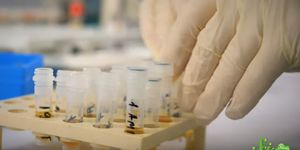Colossal Study for the Missing (Anti)Matter
Physicists believe that our observable universe exists in a mirrored configuration: any fundamental particle such as protons and electrons have their antimatter counterparts. And at the infancy of our world, normal matter and antimatter were created in the equal amount.
However, it does not take much fancy experiments and detectors to notice the striking absence of antimatter. Such a phenomenon violates one of the governing doctrines in physics known as CP-symmetry (charge conjugation parity symmetry).
The Tokai-to-Kamioka (T2K) experiment in Japan, an international collaboration of 60 research institutions, is among the mega projects designed to address the dominance of matter in our current universe. The focus is to measure CP violation in the form of muon neutrino to electron neutrino oscillations, using an intense particle beam emitted from Tokai (east coast of Japan) and measured 295 km away by the Super-Kamiokande far detector in Hida.
The experiment turned up encouraging results, according to a recent report from the group. Scientists are hoping further research can help to prove whether leptonic CP violation, the finding in their first study, can lead to a better understanding of the matter-antimatter imbalance.
Source: Nature Video via Youtube








